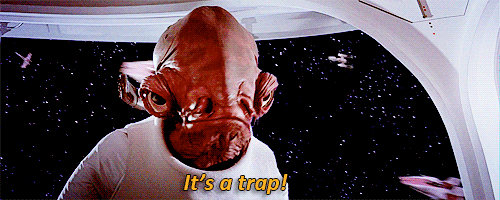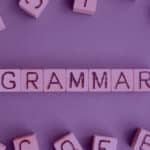
The English language contains over a million words,
but you’re not expected to know them all.
For this part of the exam, is it in your best interest to be well-read and have a solid vocabulary? Of course, but you also need problem-solving skills that are specific to this task. While vocab lists are important, you won’t succeed by just memorizing hundreds of flashcards.
Think about it—8 questions in Sentence Completion. Some have 5 words in the answer choices (single-blank) and some have 10 (double-blank). Then there’s a smattering of vocab in the sentences themselves. So expect around 75 vocab words. These are chosen at the College Board’s discretion. Some are more likely to show up, but for the most part, it’s all fair game.
If/when you run into a new word, it’s OK. This isn’t just about your lexicon. In Sentence Completion (and every other part of the SAT), the College Board is testing 1) your key skills and 2) your familiarity with the test itself.
Key Skills & Strategies
To improve your speed and chances of answering correctly, take these steps BEFORE looking at the answer choices.
Context Clues
- Cover the answer choices and read the entire sentence.
- Identify the descriptive words, phrases, and punctuation that hint at the answer. These give imply relationships between different words, tell you if the answer has a positive/negative meaning, or give you synonyms/antonyms.
- Also look out for transition words, contrast words, negative words, and double negatives. You need this to know the overall meaning and logic of the sentence. That way, you have context for what kind of word goes in the blank. Now, we have to make an inference:
Inferences
- Based on the context clues and what they imply, take an educated guess about what kind of word you need.
- Put your own word/phrase in the blank. It can even be a word that’s already in the sentence; the point is to have some sort of guide or target when you finally look at the answer choices.
- NOW you can try A through E, one at a time. Plug them into the sentence and eliminate ones that don’t match your own word.
Common Pitfalls
All sections of the SAT test your knowledge of…the SAT. That’s just a reality, so be wary of the College Board’s favorite traps and how to avoid them. Notice that in all of these tricky scenarios, knowing the word definitions isn’t going to save you. That’s why strategy and familiarity matter.

Time
It’s no coincidence that Sentence Completion is at the beginning of Critical Reading. Students may spend too much time here and compromise the rest — over 8 questions! Since these are in order of difficulty, knock out the easy ones and don’t obsess over the last few. If you can’t guess with confidence (or narrow down to 50/50), skip and move on. You need that time for passage-based questions.
Long, confusing sentences
You get lost in a sentence, miss the context clues, come up with a guess word that’s totally off, and pick the wrong answer. It’s important to break the sentence into parts. Use transition/contrast words to determine the meaning and flow.
Topic: Don’t Take the Bait!
A word is related to the topic of the sentence and looks appealing, especially if you’re rushed or nervous. Trap! The meaning of the sentence is what matters, not the topic.
Example: Since Kelly didn’t expect anything for Valentine’s Day, she was ___________ by the bouquet of roses on her desk.
- intrigued
- astonished
- love-struck
- disappointed
- irritated
The correct answer is B. Kelly didn’t expect anything so she was astonished, or surprised. If rushing, you might choose “lovestruck,” since that word is associated with Valentine’s Day (…sometimes).
“Close Enough”—Don’t Take the Bait
A word may look or sound like the one you’re looking for (or have the same word root), but has a completely different meaning. Careful—these are often wrong.
Example:
Working on the history class project, the group neglected to verify facts, check timelines, or consult textbooks; therefore, the final product was highly _____________, full of easily avoidable mistakes and inaccuracies.
- lackluster
- anachronistic
- enthralling
- erratic
- precise
The correct answer is B) anachronistic, which means that something has a historical error, or reports an inaccurate time/place. This definition is literally in the sentence (right after the blank) and it’s a huge context clue. However, let’s say your guess word is “errors” (which is fine) — but because that looks/sounds similar to “erratic,” you choose D. Wrong—“erratic” actually means unpredictable or inconsistent. It’s a negative word, but not the one we need.
Double-Blanks: Intimidation
These look harder than they actually are, so students spend more time. That’s not always necessary. Double Blanks give you TWO chances to answer correctly, making elimination easier. If you know for sure that the first word in a pair doesn’t fit, you don’t have to worry about the second one. Eliminate. Since the SAT is a game of odds, finding reasons to eliminate answer choices is arguably more useful than knowing exactly why an answer is right. The more you can confidently eliminate, the better your chances.
Double Blanks: Tempting words (Don’t Take the Bait!)
In this scenario, one of the words in the answer pairs will be absolutely perfect. It might even be your guess word! You get tempted and choose it. Don’t! Mixing and matching is not allowed. If you like a word, great—but check the other one. If you don’t know what it means, be extra careful! Try to eliminate the other choices before answering.
Example:
A great swimmer must be exceptionally _________ and quick; for instance, Michael Phelps won medals due not only to his physical force, but also his remarkable ________ in the water.
- fit…fortitude
- powerful…technique
- poised…speed
- strong…pace
- rapidity…powerful
The correct answer is D. The trap answers are B (since “powerful” fits the first blank) and C (since “speed” fits the second blank). In both pairs, one word is a perfect fit but the other one is wrong.
Double Blanks: Switched Up
An answer will have two suitable words, but in the wrong order! One example of this trap is answer choice E (rapidity…powerful) in the above question. Those words would work, but only if switched around. Toss it.
Image credit: Pixabay, Giphy





Leave a Reply